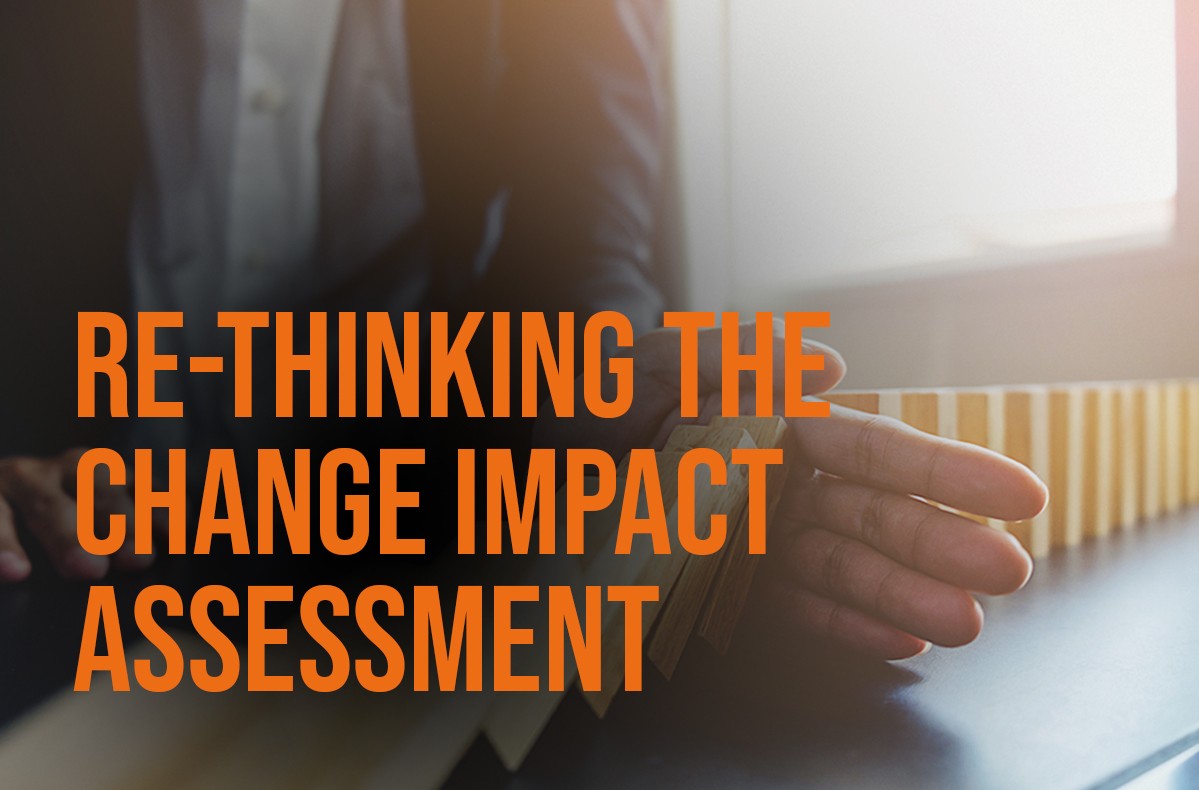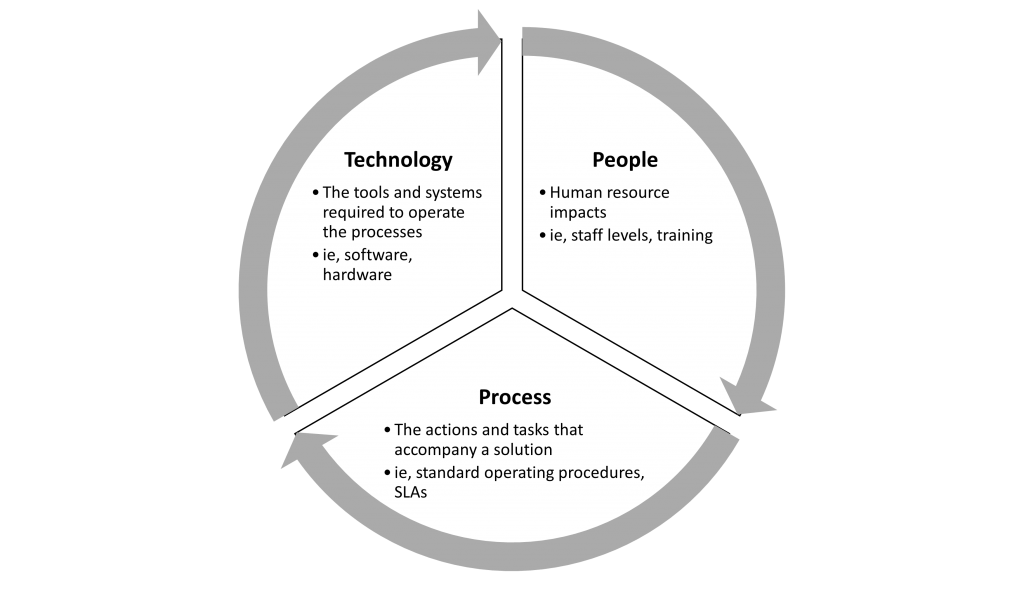
“Our stakeholders will forget what we do here today, but they’ll never forgot how we made them feel”. This was said to me by my sponsor, the CIO of a national organisation.
But often we focus more on what our project produces, and not so much on how what we produce would impact our stakeholders.
This article examines the ‘Change Impact Assessment’, a simple tool that PMs and Sponsors commonly overlook, which can have a powerful effect on the stakeholder experience, and accordingly, the stakeholder perception and support of their projects.
We look at application of the Change Impact Assessment, common pitfalls and how other tools in Seven’s delivery framework can be integrated to proactively diagnose, and manage, your project’s stakeholder impacts.
Background
Over the last 3 years, I have had the opportunity to lead a number of successful transformations where the focus has not been solely technology. In these programs we undertook to implement holistic change across the client organisation: merging/consolidation of separate commercial entities, the establishment of new departments and business units; implementation of new ways of working and operating models.
These experiences have led me to reflect on the importance of having an expanded toolkit as a project manager, in order to support our stakeholders in navigating these transformations.
Firstly, what is a Change Impact Assessment (CIA) ?
Put simply, the impact assessment is a diagnosis tool which evaluates the effects your project will introduce to stakeholders across a set of criteria. The common industry convention is: People, Process, and Technology (aka, PPT).

Similar to a Risk & Issues register, we apply the impact assessment to help the project team, and our stakeholders, understand the positive and negative implications of a change, and to agree on strategies which will reduce, or avoid any negative aspects while enhancing positive impacts.
Where we go wrong?
Early in my career I left the impact assessments to my change leads, and focused my attention to the technology components of a program, only re-focusing on these outputs towards the later part of the project lifecycle, where change management activities become increasingly necessary and were more difficult to change if that was required.
Looking back in hindsight, I see these as missed opportunities to improve the stakeholder experience, and mitigate issues which could have been identified ahead of an impending implementation.
In addition to not doing an assessment all together below are some common mistakes that I have observed in examining stakeholder impact, some simple things we can do to mitigate.
Five Common Mistakes, their Impacts and Mitigations
Early in my career I left the impact assessments to my change leads, and focused my attention to the technology components of a program, only re-focusing on these outputs towards the later part of the project lifecycle, where change management activities become increasingly necessary and were more difficult to change if that was required.
| # | Mistake | Impact | Mitigations |
| 1 | Treating it as a tick-the-box exercise |
|
|
| 2 | Not getting the right stakeholders in the room |
|
|
| 3 | Not validating the Change Impact Assessment with your key stakeholders |
|
|
| 4 | Only documenting the impacts, but not producing a plan to remediate |
|
|
| 5 | Not reviewing the CIA regularly throughout the Project Lifecyle |
|
|
The role of the Program Manager vs the role of the Change Manager?
The programs Change Manager should be the primary expert on stakeholder impacts, responsible for both facilitation of the CIAs and play a key role in the mitigation of impacts. In the event that there is no Change Manager assigned to the program, then it is the Program Manager’s role to fulfil this function.
However, with or without a Change Manager, the Program Manager is responsible for the incorporation and integration of the CIA impacts into the project plan, and for escalations to the Sponsor and Steering Committee where impacts result in material detriment to the agreed program goals, or its success criteria.
Synergies with other PM tools:
The Change Impact Assessment (CIA), should be supplemented and integrated with other components in the Program Manager’s toolkit:
| # | Tool | Description | Synergy |
| 1 | O3 (Objective, Output, Outcome) | The O3 defines and aligns the program objectives (goals), outputs (deliverables), to its benefits (outcomes) | The O3 can help guide discussion of impacts against the benefits of the program |
| 2 | Responsibility assignment matrix (RAM) | Commonly used is a RACI matrix | A quick visualisation of key stakeholders, and groups engaged by the program |
| 3 | Win/Loss | A simple tool to identify what each stakeholder may stand to gain or lose when the project goes live | Quick assessment on how some stakeholders may be predisposed to a program by their wins and losses |
| 4 | Project Sliders | The slider defines project success dimensions | This works with the O3 to provide a quick heuristic to help the project team assess priorities for impact mitigations |
| 5 | Project RAID | Risks, Issues, Assumptions, and Dependencies | The impacts that the CIA identifies, are typically going to become a Risk, Issue, Assumption, or Dependency on the program.
As such the CIA mitigations should readily integrate into the program RAID. |
Does the CIA apply to all Programs – or do some benefit more from it than others?
I would argue all programs benefit from doing a change impact assessment, but not all will benefit to the same degree.
The correct allocation of resources on the CIA, to maximise its benefits is an area where the PMs and CMs need to exercise their expert knowledge and good judgement.
I propose the time invested in the assessment, and the ongoing maintenance of it, needs to be informed by, and correlate with:
- Size and complexity of the program
- Risks to the organisation in the event of failure
A project which is low risk/low complexity such as routine maintenance, or a small infrastructure uplift, would not require the same level of ongoing assessment as a major restructure where staff roles are impacted.
In short, the assessment increase in importance when there are more things that can go wrong to more people.
Interested in more information?
Visit our website: https://www.sevenconsulting.com/
Suggested Reading:
- PM Plug-ins – Risk Management Tools (https://lnkd.in/gVBexUj)
- PM Plug-ins – Risk Management Impact (https://lnkd.in/gsw9SaX)
- PM Plug-ins – O3 – Objectives, Outputs, Outcome (https://lnkd.in/eQs9PAv)
Other Readings
- https://www.prosci.com/resources/articles/defining-change-impact
- https://online.hbs.edu/blog/post/change-management-process
An understanding of all Seven Consulting’s services and related client case studies are available at https://www.sevenconsulting.com

About Hoang Cat
Hoang is a skilled project professional who has been with Seven Consulting’s Melbourne practice since December 2013. He has extensive experience with project delivery and has a solid track record of turning around complex projects. Hoang has a strong background in the financial services industry, with a focus on wealth, and banking. Recently he has been supporting clients in the NFP and energy sectors to transform their business. Whether dealing with C-level executives, board members, or frontline staff, his adaptive engagement style has been successful in developing key ongoing relationships with all his major stakeholders. His cooperative and transparent approach to teamwork ensures morale is maintained in the face of difficult delivery targets.



